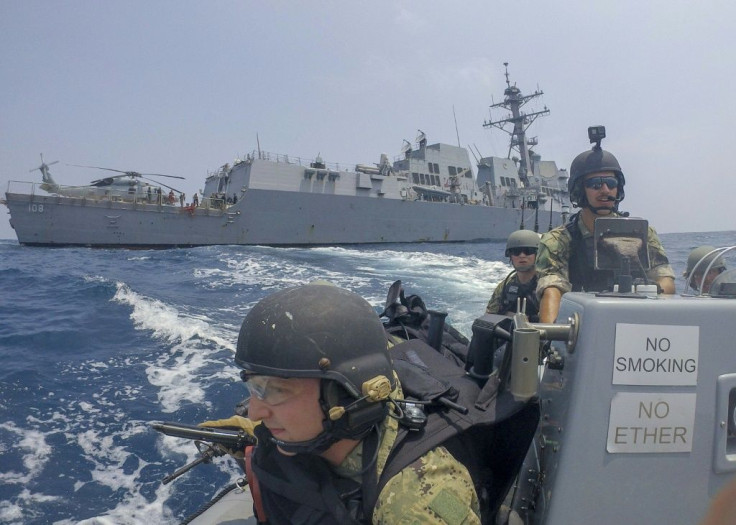South China Sea Tensions: China Ups the Ante With Anti-Submarine Air Drills

China’s People’s Liberation Army (PLA) deployed military aircraft to conduct an anti-submarine drill over the South China Sea, according to a report issued Friday by the PLA Navy.
The timing of the drill indicates that the moves could be a response to a four-day exercise the U.S. staged the previous week involving the USS Theodore Roosevelt Carrier Strike Group, the America Expeditionary Strike Group, and the 31st Marine Expeditionary Unit.
It also comes at a time when China is emerging from the coronavirus pandemic that began in Wuhan and spread globally at a rapid pace. The COVID-19 has yet to reach its apex in Europe and the United States where the threat to the global economy is the focus of most governments.
The captain of one of the aircraft in the drill, named Yu Yang, explained how some of the logistics of the drill. He said, “Anti-submarine exercises are like trying to find a needle in a haystack. It’s difficult, the underwater hydrological conditions are complex. But by having two planes working together, it increases the probability of finding a submarine.”
Wang Shelin, an exercise commander, said that anti-submarine operations were dangerous and a real test of the pilots’ skills that demanded precise “control of the speed and altitude of the aircraft”. The PLA report also said that several “suspicious objects” were successfully identified.
Collin Koh is a research fellow with the S Rajaratnam School of International Studies at Nanyang Technological University in Singapore. He frequently comments on China’s activities to the South China Morning Post (SCMP). His opinion is that China is placing some keen interest in its anti-submarine capabilities.
He said, “This means we can expect to see more such exercises in the future, with no let-up because of the coronavirus. You can also see this as a response not only to the [recent] carrier strike group operations but the intensified US military presence in the South China Sea. And it would not be surprising if a (USA) nuclear attack submarine was in the vicinity of the carrier strike group.”
Another Hong Kong-based commentator, Song Zhongping, said that as tensions rise toward the possibility of military conflict in the South China Sea, it was important for the PLA Navy to increase its anti-submarine training. He said, “The rivalry between the great powers is getting more and more intense, and the PLA must strengthen its preparations.”
The PLA also commented that their military aircraft were to be repainted with “low-observable” coatings and standard markings. According to Song Zhongping, the aircraft used to have a bright red national flag and service insignia that could be easily seen with radar systems, or even with the naked eye. Song said, “The red they used is striking, but it’s not in line with the ‘low observable’ requirement for all fighter jets. All fighter jets must have stealth and low-visibility capabilities, and the coatings and markings on them are part of how they can do this and meet requirements for combat.”
Upgrading its aircraft coatings may be Beijing’s response to the U.S. sending hundreds of new-generation F-35 stealth fighter jets to South Korea and Japan.
© Copyright IBTimes 2024. All rights reserved.




















